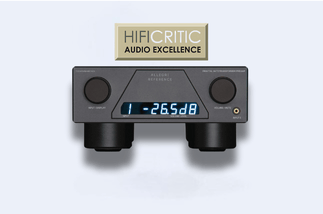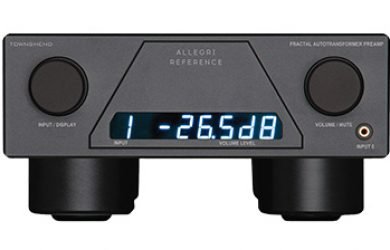Hi-res music sources carry musical information way beyond 20kHz, while modern tweeters and amps can deliver it to your listening seat. But what are we actually hearing, asks Paul Miller.
[column col=”1/3″]
From the very first moment that CD landed on our shores, audio diehards were unconvinced that its limited 44.1kHz sample rate and mere 16-bit quantisation accuracy was anything like sufficient. The sample rate came in for greatest criticism because it limited the practical bandwidth to 20kHz. Surely we needed a wider frequency response – closer to 40kHz, perhaps?
With the advent of DVD (Audio), SACD and, most crucially, the burgeoning availability of ‘high resolution’ 96kHz music downloads, that’s exactly what we’ve now got [see Graph, below]. And most of us reckon our hi-fi systems sound all the better for it. However, the medical community is still at odds as to how, or indeed if and why, sonic content above 20kHz should be perceptible at all. So who’s right?
SUPER SONIC
The reason for this musing? A clutch of journal reprints on this very subject mailed to Hi-Fi News, among others in the industry, by Townshend Audio. Bearing in mind the company manufactures an add-on supertweeter, it not unreasonably has a vested interest in the subject.

ABOVE: Afro Cuban Latin Jazz from El Vuello –an iTrax download with music above 20kHz
‘It is postulated that our eyes may act as acoustic lenses for our ears’
[/column]
[column col=”2/3″]

ABOVE: Townshend’s ribbon supertweeter offers a claimed 20kHz to 70kHz (±3dB)
But the literature bears close examination. First off, a team from Tokyo’s NHK Science and Technical Research Labs reported a ‘Perceptual discrimination of very high frequency components in musical sound…’ [AES Convention Paper 6298, 2004]. The experiment involved two separate digital reproduction chains, one feeding musical content below 20kHz into B&W 801s which were augmented by Pioneer PT-R9 supertweeters fed content expressly above 21kHz. The master tracks were recorded at 192kHz using microphones with a response extending to 100kHz, albeit with a broad +10dB uplift above 10kHz.
The ultrasonic portion of the recording was switched in and out and the reaction of some 13 test subjects evaluated. To paraphrase, although their sensitivity was linked to the duration of the (listening) test, two of the panellists were reportedly able to discriminate between the 20kHzlimited and full-bandwidth versions with decent statistical odds.Interestingly, when the response of their hearing was measured with standard tones, neither panellist exceeded 22kHz.
As the researchers concluded ‘We have no hypothesis or scientific reasons that can explain this finding…’ It is worth bearing in mind that the audio and ultrasonic passbands of the two parallel speaker chains were separated by very high order FIR filters, achieving a ‘It is postulated that our eyes may act as acoustic lenses for our ears’90dB rejection within a transition band of just 1kHz. So were these subjects really listening to ultrasound in the raw?
Plain vanilla CD uses a similar low-pass filter regime and it’s the inherent phase distortion, among other mechanisms, that we seek to avoid with 96kHz+ digital recordings and their gentler, higher frequency filtering. So while 96kHz/192kHz digital audio encompasses the ultrasonic it may sound better simply because any debilitating numbercrunching is deferred to inaudibility.
EYES FRONT
But perhaps there’s another reason to doubt the correlation between the ‘response’ of our hearing and our perception of ultrasound. A reason, in part, that lies in the use of headphones to measure human hearing response. As a more recent submission to the International Tinnitus Journal [Vol. 13, No.1, 3-10 (2007)] suggested, our eyesmay serve as ‘fenestrations to the ears’.
Having measured the physical frequency response of the eye up to 60kHz, it is postulated that our eyeballs may act as acoustic lenses for the ears, ‘passing frequencies beyond the impedance-matching capacity of the eardrum.’ No listening tests here but electroencephalograms that illustrate physiological activity in the brainstem and thalamus ‘when ultrasonic musical frequencies are combined with the musical spectrum below 22kHz.’ Whichever sage suggested that our ‘eyes are the windows to our soul’ was probably onto something.
[/column]
[column col=”1/1″]
[divider]
[space height=”20″]
[/column]

















